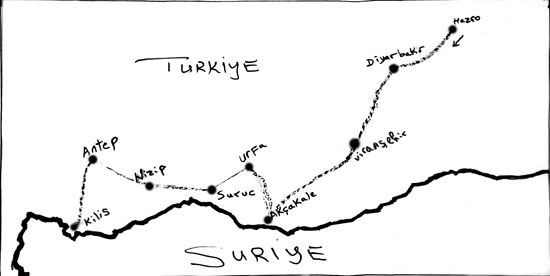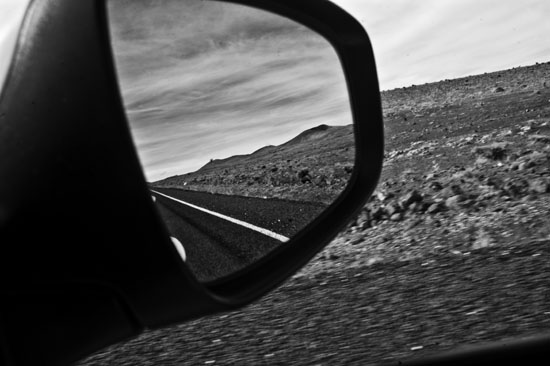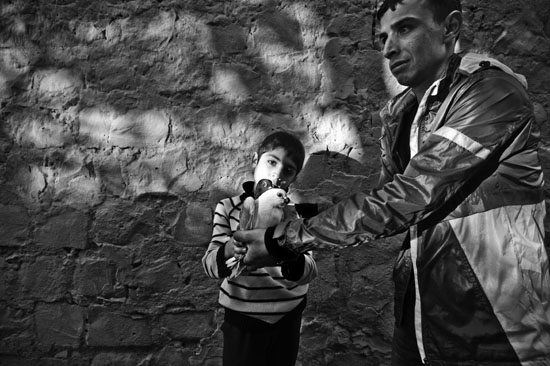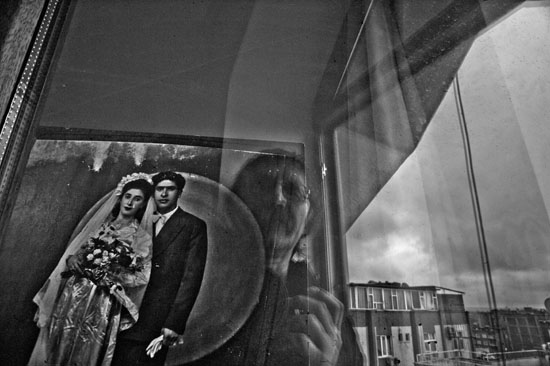Diyarbekir’den Halep’e tersine bir göçün, bitmeyen bir hasretin hikâyesi


Diyarbakır’ın Hazro ilçesi doğumlu bir Ermeni olan babam, 1930’da ailesi ile birlikte Suriye’nin Halep şehrine göç etti. O zamanlar dokuz yaşındaydı. Ve ailesi ile birlikte iki yıldır Diyarbekir’in Ermeni mahallesinde yaşıyordu. Bu taşınma bir tercih değil, zorunluluktu. 1915 Soykırımı’nda genç yaşında ailelerinin pek çok üyesini, akrabalarını yitiren büyükannem ve büyükbabam, katliamların çalkantılı, kara günlerinde büyüyerek birbiriyle evlendi. Can kayıpları, zorunlu Müslümanlaştırmalar ve Hıristiyan Ermeni kökenlerinden ötürü yerel halktan gördükleri zulüm, büyükanne ve büyükbabamı Hazro’dan kaçarak Diyarbakır’a sığınmak zorunda bıraktı. Ama bu göç bile, yeni Türkiye Cumhuriyeti’nde azınlık mensupları olarak maruz kaldıkları eziyeti sonlandırmaya yetmedi. Bu sebeple, atalarının memleketini terk ederek pek çok arkadaşlarının ve uzak akrabalarının yeni yuvalarını kurduğu Suriye’ye kaçmaya karar verdiler.
2013 yılının ilkbaharında, arkadaşım ÖzcanYurdalan, beni telefonla arayarak Ermeni Soykırımı’nın 100. yıldönümü için tasarlanan bir görsel/multimedya projesinde yer almak üzere görüşmeye çağırdı. İlk hazırlık toplantılarında benim rolüm, katılımcı fotoğrafçıların ne gibi projeler hazırlayabileceklerine dair fikir üretmekti. Örnek vermek gerekirse, bu toplantılardan birinde, kaç yıldır babamın ailesinin 1930’larda Diyarbekir’den Halep’e kaçış yolculuğunun görsel bir güncesini tutmak istediğimi anlattım. Hayatım boyunca, onların Suriye’ye gitmek için geçtikleri, kaçakçıların kullandığı o yoldan yürümeyi istemiştim. Bu buluşmalar bir zaman sonra aniden sonlandı ve neredeyse bir yıl boyunca projeye dair hiçbir gelişme olmadı. Sonra günlerden bir gün, Nar Photos’tan Erhan Arık beni arayarak, 2015 projesi ile ilgili çalışmaların Nar Photos gözetiminde başlayacağını ve benim de babamın seyahat güncesini hazırlayarak projeye katılmamı arzu ettiklerini söyledi.
Birden işler hızla ilerlemeye başladı, Heinrich Böll Vakfı’ndan fon temin edildi ve Ermenistan’dan kadınların oluşturduğu 4Plus Collective ve Türkiye’den Nar Photos ile birlikte gerçekleşen projede, katılımcı fotoğrafçı olarak yerimi aldım.
Hasrete dair bir yolculuk
Seyahat güncemin ‘hasret’ konusunda olmasını istiyordum. Babamın ve büyükanne ile büyükbabamların gözünde Diyarbekir dedikleri yere dair hissettiğim hasretin güncesi. Babam benimle bu seyahat hakkında hiç konuşmadı. Ancak hayatı boyunca, Diyarbekir sözü her daim havada asılı kaldı. Diyarbekir onun nostaljisiydi. Doğduğum Kamışlı’da, sonradan yerleştiğimiz Beyrut’ta, aile dostları ile toplaşılan hiçbir buluşma,
Diyarbekir’e ve o eski günlere dair hikâyeler anlatılmadan geçmezdi. Her daim hasret vardı. Acı dolu bir hasret. Yıllar boyu sürekli Hazro, klanımın diğer üyelerinin geldiği Lice ve Diyarbekir’i dinleyerek orta yaşlı bir adama evrildim. O kadar çok dinledim ki, 2007’de ilk kez Türkiye’ye geldiğimde, en büyük isteğim bu isimlerin ne demeye geldiğini görmekti. Diyarbekir’e, oradan da Hazro ve Lice’ye gittim. Yol boyunca, oraya vardığım zaman kökenlerimin dayandığı o eski mahalleleri görebileceğimi sanmıştım. 1915 kuşağının torunları olan bizler, bazen atalarımızın geçmişi konusunda çok naif ve cahil olabiliyoruz. İnsanlara sürekli ailemin Hazro ve Lice’den geldiğini anlatıyordum, yerli ahali de bana durmadan “İyi de hangi köyden?” diye soruyordu. Ancak o zaman, kökenimle ilgili ne kadar az şey bildiğimi farkettim. Ailem hiçbir şeyi ayrıntılı anlatmamıştı ve biz de asla sormamıştık. Konu kapanmıştı. Kaybedilen bir şey, sonsuza dek kaybedilmiştir. Ve sonradan Kanada’ya yerleştiğimizde, bu hasret, Kamışlı isminde cisimleşti. Kamışlı, onların ve benim nostaljim oldu. Doğduğum memleketi ardımda bırakmış, yabancı topraklara ayak basmıştım. Tıpkı babam gibi. O kendi Diyarbekir’ine hasretti, ben ise Kamışlı’ma. Diyarbekir… Kamışlı… Diyarbekir… Kamışlı… Bu hasret nerede son bulur? Babadan oğula miras kalan tek şey, bu hüzün veren acı mıdır? Nihayetinde, onunla benim aramdaki fark ne? O, yıllarca Diyarbekir’in hasretiyle yanmıştı; ben de 8 yaşında ayrıldığım Kamışlı’nın hasretiyle. Tıpkı onun gibi ben de şarkılarımı kaybettim. Babasına bak, oğlunu al! Seyahat güncesinde kayıtlı hikâye, hem onun, hem de benim hikâyem olmalıydı. Bizim hasret hikâyemiz olmalıydı.
Çocuk-babamın izinde
Kendimi Diyarbekir sokaklarında aylak aylak dolanırken buldum. Bir yandan da çocuk- babamı buralarda oynarken, yürürken ve sadece var olurken hayal ediyordum. Ermeni mahallesinde onu, sokaktaki çocukların yüzünde gördüm. Bu şehirdeki bütün atalarımı hayal ettim. Ve sonra, onların hayaletleriyle köşe başlarında, pencerelerde, dükkânlarda karşılaştım… Burası onların dünyaya geldiği yerdi. Kendimi Diyarbekir’den Kilis, Öncüpınar’daki sınır kapısına giden yolda buldum. Dört gün boyunca yol arkadaşım Hüsamettin Bahçe ile birlikte 85 yıl önceki asıl rotaya uygun olabileceğini tahmin ettiğim küçük patikalardan geçtik. Bildiğim tek şey, Halep’e yerleşmek üzere Diyarbekir’den ayrıldıkları ve sonradan Kamışlı’ya yerleşmiş olduklarıydı. Tek yardım New Jersey’den Asdğig ve Maro Turbendians’tan geldi. Çocukken, onların babası ve benim büyükbabam, Hazro’da 1915’ten birlikte sağ kurtulmuştu. İkimizin ailesi de Kamışlı’ya yerleştikten sonra, hayat boyu dost kaldılar. Çocukken Asdğig onların Diyarbekir’deki geçmişlerine ilişkin anlattıkları hikâyeleri dikkatle dinlerdi. Asdğig, bu hikâyelerin bir kısmını benimle de paylaştı. Ayrıca benim için o günlerde 8 ila 10 gün süren o güzergâhın ana hatlarını da buldu. Hüsamettin, arabayı mümkün olduğu kadar bu yolun yakınından sürerken, ben de arabanın camından fotoğraf çekiyor ya da dışarıdan fotoğraf çekebilmek için sıklıkla ondan durmasını rica ediyordum.
Kafanızda neyi fotoğraflayacağınıza dair belirgin bir şey olmaması tuhaf bir his. Ama yine de her şeyi babamın, o zamanlar 9 yaşında olan o çocuğun gözünden görmeye çalıştım. Ne görmüş olabilirdi acaba? Neye hayran olmuştu? Yol boyu kimlerle karşılaşmıştı?
Babam, bana bu yolculuğunu hiç anlatmadı. Ama sonunda ben onun çocuk haline dönüştüm. Onun gözleriyle gördüm ve içimde ta derinde, sessizce gözyaşı döktüm; çünkü yolculuk bitmişti ve ben onun memleketini, kendi memleketimi, sonsuza kadar arkamda bırakmıştım.
******

Bu hikâye üzerine çalışmak bir bakıma iyi. Halen de devam ediyorum ve şunu fark ediyorum ki, elimdeki bir avuç bilgi kırıntısı ile yeniden oluşturmaya çalıştığım babamın ayrılış hikâyesi paramparça. Ortada bütün bir hikâye yok. Sadece biraz malumatım var. Gençken, ne yazık ki yeterince kulak kabartmamışım. Gerçi onlar da benden sonraki nesillere ve sevdiklerime aktarmamdan imtina edip bana hikâyeyi ayrıntılı bir şekilde anlatmadılar. Her halükârda Diyarbekir’den Kilis’e yaptığım bu yolculuğun onların izlediği yol üzerinden devam edip etmediğinin önemi yok. Mühim olan, yıllar sonra bu hikâyeyi tamamlamak maksadıyla parçaları bir araya getirmeye çalışmış olmam. Gerçekten neler olduğunu tam anlamıyla bilmek çok zor. Yeni bir hayat kurma umuduyla, bu yolları nasıl aşındırdılar? Benim için de öyle aslında, yeni bir hayatın başlangıcı bu yollar. Zira içimdeki tüm gizemi ardımda bırakıyorum. Her zaman tahayyül etmeye çalıştığım o acı dolu gizemi. O yüzden de ben kendi hikâyemi yarattım. Ayak bastıklarını düşündüğüm yerleri, ben de adımlayarak yeniden aynı yolları katettim. Doğru ya da yanlış, bilemiyorum ama ben kendi seyahatimi gerçekleştirip, hiç vâkıf olamadığım ayrıntıları arkamda bıraktım. Benim için yeni umutlarla dolu, yeni bir başlangıç. Âdeta onca yıldır içime oturmuş ağırlıktan arındım. Hep babamın çocukluğunu düşündüm, Diyarbekir’in sokaklarındaki o çocuğu… Büyükbabamı hayal ettim, bir avluyu yıkayıp temizlerken… Her şeyi gözümün önüne getirmeye çalıştım. Fakat artık hayal etmeme gerek kalmadı. Artık biliyorum. Bu beni kendine çağıran bir yolculuktu ve ben gittim. Gittim ve beni bağrına bastı. Şimdi Diyarbekir yeni bir ‘Diyarbekir’… Yepyeni bir umutla.

Celal* bir hasret şarkısı söylüyor… Acılarla dolu bir ezgi. Üçüncü veya dördüncü defa dinliyorum bu ezgiyi ve içimdeki hasret, gıdım gıdım büyüyor. Özledim seni, Kamışlı’yı özledim. Babamı, çocukluğumu özledim. Bu hasretlik nerede başladı? Nereden? Kamışlı’dan mı? Çocukluğumdan mı? Atalarımın Diyarbakır’ı terk ettiği zamandan mı? Ama bu hasret öyle kuvvetli ki, bazen göğsüm patlayacak gibi oluyor. Bu acıya daha fazla tahammülüm kalmadı. Tüm hayatım, bu özlemle dolu. Bazen dayanılmaz hale geliyor.
*Celal Güzelses, Diyarbakırlı Kürt Müzisyen (1899-1957)

Sınırdaki o Suriyeli mülteci çocuğu düşünüyorum, Mulham’ı, onu da özledim. Özledim… Acısını söküp almak için sarılmak istiyorum ona. Bana demişti ki: “Senin acın benimkinden daha fena… Ben savaş bitince Halep’ime geri döneceğim. Sen ise Kamışlı’ya 50 yıldır hasretsin ve bu vakte kadar da görememişsin. Bu kadar zaman çok fazla…” Haykırmak istiyorum. Feryadımla 50 yılın acısını içimden söküp atmak…
Yolun her noktasında Suriyeli mültecilerle karşılaştım. Her yerdeler. Kasabalarda, yollarda… Bazıları pamuk topluyor, bazıları da engin arazilerde yerdeki taşları temizliyorlardı. Sokaklarda oturuyorlardı. Her yerde… Babam ve ailem Diyarbekir’ı terk etmek zorunda kalıp Suriye’ye gittiklerinde, onlarla aynı durumdaymışlar. Neredeyse… Çıkınları boş, cepleri boş… Bir mülteci kampında kalmışlar. Seksen veya doksan yıl evvel onları kabul edip, yardım elini uzatan ve merhametlerini sunan insanların, şimdi atalarımın terk etmek zorunda kaldıkları topraklara gelmeleri ne kadar garip; en azından kendilerini biraz olsun güvende hissedebilecekleri bir sığınak arayışı ile… Başka yer ve başka zamanlarda bunun gibi zoraki mübadeleler olmaya devam edecek. İnsanlar, atalarının topraklarını terk etmeye için zorlanacak. Çok çok uzun zamandır tanıdıkları toprakları… Suyunu içip, havasını soludukları toprakları… Terk etmeye ve acılarla dolu uzun bir yolculuğa çıkmaya zorlanacaklar. Hatıralarla dolu yeni bir yaşama başlamaya… Çocukluklarına, gençlik zamanlarına kadar uzanan hatıralarla… Geri dönüş de yok. Topraksız kalacaklar. Bir defa bıraktın mı arkanda, hiçbir zaman eskisi gibi olmayacak. En acı tarafı da bu… İnsanlık tarihinin trajedisi…

Celal’i tekrar tekrar çalarak, beni ağlatan yol arkadaşım Hüsamettin Bahçe’ye tüm kalbimle teşekkürler…


